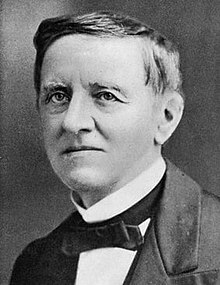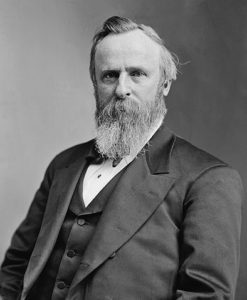Lew Wallace spent the Christmas holidays in Tallahassee, Florida, in 1876. He wasn’t there to enjoy the sunshine and orange groves—rather, he was there as a “visiting statesman” for the Republican Party in the fallout of one of the most contested Presidential elections in history. It was, in fact, even more hotly contested than the 2000 election!
A Contested Election

In 1876, Wallace had traveled the State and portions of the South extolling the virtues of the Republican candidate, Rutherford B. Hayes. With his outstanding speaking ability, Wallace helped Republicans win control of the Indiana legislature and gain nine congressional seats. Indiana’s presidential vote, however, went to Democrat Samuel Tilden.
Early national election returns showed Tilden was leading. As the final returns came in over the next couple of days, the results showed Tilden winning the popular vote—but not the Electoral College. The races in Louisiana, South Carolina, and Florida were too close to call. If Hayes secured any one of these three states, he would win the Electoral College by one vote.
The Republican Party held control of the legislatures in all three of those states because of the black vote. The issues and irregularities were complicated in each of the states, but in Florida they were especially difficult. The head of the Republican Party sent four representatives to Florida to protect the party interests, including Wallace.
Lew Sent to Tallahassee
Lew was already in Louisiana, having been dispatched there by the Indiana Republican State Chairman. He arrived in Tallahassee about November 19 and stayed through early December. The legal, ethical, and political challenges of monitoring the election returns, recounts, and court challenges were daunting.

In letters to Susan, Lew shared his amazement that African-Americans, who suffered the most, would not give up hope, but instead clung to their beliefs in “freedom and God.” He also wrote that while he believed that Hayes carried the State, he would not be “a party to any intentional wrong” and “if the results show Tilden entitled to the state I shall say so.”
Lew returned to Crawfordsville on December 11. That same day, he received a telegram calling him back to Florida to address new court actions filed by the Democrats. The political intrigue carried on through the end of January with Lew managing every critical aspect of the Republican strategy.
A Final Decision
Wallace traveled to Washington in February to testify before a Joint Committee of Congress and the Supreme Court. In final decisions rendered on March 3, 1877, Congress accepted the report.
The judgment awarded Hayes victory in Florida and the presidency.
In August of 1878, Hayes offered Lew the position of minister to Bolivia. Lew declined. A month later in September, Hayes appointed Lew governor of New Mexico Territory. This appointment removed Lew from a difficult position in Indiana where most Republicans (including his brother-in-law Henry Lane) were mobilizing behind Orth.
This appointment also gave him a small but steady income that would lessen his dependence on his brother-in-law Isaac Elston, II. Lew probably also saw the possibility of political advancement as New Mexico moved toward statehood.
While serving as governor, Lew finished writing Ben-Hur. Ultimately, New Mexico did help Lew secure the fame and fortune he had long pursued. You can learn more about his time as Governor of New Mexico here.
One thought on “Lew Wallace in Tallahassee”
Lew Wallace has always been a hero of mine. I’m proud to say that I’m related to this great man.